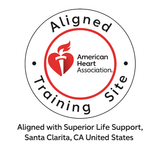Cardiopulmonary Resuscitation (CPR) is a vital life-saving skill that equips individuals to respond promptly and effectively during emergencies. Whether you are a healthcare professional or a concerned citizen, obtaining the right CPR training is crucial. However, with a plethora of courses and certifications available, selecting the most suitable one can be overwhelming. In this comprehensive guide, we will walk you through the process of choosing the right CPR training course. We will compare different CPR certifications, discuss the importance of AHA-approved training centers and instructors, offer tips on considering training schedules, cost, and location, and highlight the value of hands-on practice and feedback during CPR training.
Step 1: Identifying Your Target Audience and Needs
The first step in choosing the right CPR training course is to identify your target audience and specific needs. Different certifications cater to distinct audiences, ranging from healthcare professionals to lay rescuers. Healthcare providers, such as doctors and nurses, often require Basic Life Support (BLS) certification. On the other hand, individuals seeking to learn CPR for personal or workplace readiness may opt for courses like Heartsaver or CPR/AED training.
Step 2: Comparing Different CPR Certifications
Let's explore some common CPR certifications and their target audiences:
-
Basic Life Support (BLS): Designed for healthcare professionals, BLS certification covers advanced CPR techniques, use of automated external defibrillators (AEDs), and team dynamics during resuscitation efforts.
-
Heartsaver CPR/AED: Geared towards lay rescuers, this course covers CPR techniques for adults, children, and infants, as well as how to use an AED.
-
Heartsaver First Aid CPR AED: This comprehensive course includes both CPR training and basic first aid skills, making it ideal for workplace safety and preparedness.
Step 3: Verifying AHA-Approved Training Centers and Instructors
When choosing a CPR training course, always opt for an American Heart Association (AHA)-approved training center with certified instructors. AHA is a leading authority in CPR and first aid training, ensuring courses adhere to the latest guidelines and best practices. AHA-approved instructors undergo rigorous training, assuring the highest quality instruction.
Step 4: Considering Convenience - Training Schedules, Cost, and Location
To ensure maximum participation and convenience, consider the following factors:
-
Training Schedules: Look for courses that fit your schedule, whether you prefer weekday evenings, weekends, or condensed classes. Flexibility in training schedules accommodates various lifestyles and commitments.
-
Cost: While cost should not be the sole determining factor, it is essential to find a course that fits your budget. Compare prices among different training centers, keeping in mind that quality training is worth the investment.
-
Location: Choose a training center that is easily accessible from your home, workplace, or community. Convenient locations encourage regular attendance and commitment to learning.
Step 5: Emphasizing Hands-on Practice and Feedback
Hands-on practice is a crucial aspect of CPR training, as it builds confidence and muscle memory. Look for courses that offer ample hands-on practice with manikins and AED trainers. Additionally, courses with a low student-to-instructor ratio allow for personalized feedback, enabling you to refine your techniques and ensure proficiency.
Conclusion
Choosing the right CPR training course is an essential step towards empowering yourself with the skills to save lives during emergencies. Identify your target audience and specific needs, compare different CPR certifications, and ensure you select an AHA-approved training center with certified instructors. Consider convenience in terms of training schedules, cost, and location, as these factors influence your commitment to the course. Finally, prioritize hands-on practice and feedback to build confidence and proficiency in administering CPR.
Remember, CPR training is not just a certification; it is an invaluable skill that has the potential to make a life-saving difference in critical situations. By investing in the right CPR training, you become a vital link in the chain of survival, ready to respond with confidence and compassion when seconds count.


